Plumbing in a private house from a well - a simple solution
Lack of central water supply can be a serious problem in a country house. Laying of engineering networks carried out at the stage of building a house, but you can equip these things after the completion of the main works.
The simplest and most effective solution to this problem is the organization of water intake from the well. Compliance with the technology of construction of water supply will provide the house with the required amount of water under sufficient pressure.
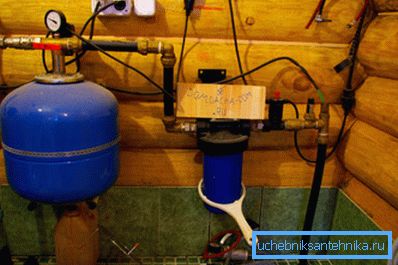
The elimination of the need to drill a water well becomes a consequence of the fact that the price of work is significantly reduced.
Pros and cons of water supply from the well
The advantages of such a system include:
- no need for paperwork;
- no water bills;
- high quality fluid;
- system autonomy.
- low cost of work;
- long service life of a well.
Among the shortcomings worth noting:
- penetration of melt water due to violation of the technology of installing concrete rings;
- deterioration of water quality due to improper location of the source;
- an imbalance of inland waters due to an unsuitable place can cause them to scrub the foundation of the house and make the ground swamp.
The main elements of the plumbing system
A water supply system is a system of pipes and other elements that performs the function of transferring water from a well to consumers in a house (learn here how to build a water supply system in a country house from a well).
The main components of the system are:
- Submersible pump, the choice of which affects the depth of the well, its diameter, the distance to the house. This takes into account such parameters as performance, power, case material and the presence of thermal protection.
Tip! You can also use a surface pump, which is much easier to install and maintain. However, he is able to pump out water located at a depth of not more than 9 meters.

- Water lifting pipes designed to supply water from the source to the house. For these purposes, suitable polypropylene pipes, which are characterized by ease of installation. However, they are not subject to corrosion, unlike metal products, and do not affect the taste of water.
The most widely used metal-plastic pipes due to its ability to bend at any angle, which allows the plumbing of any configuration.
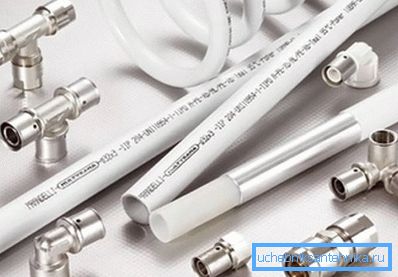
- Water tank (hydroaccumulator) is designed to provide the necessary supply of fluid. It is installed on the roof of a house or a special site equipped for such purposes.
When there is a decrease in the amount of water, the pump automatically turns on, which, having eliminated the lack of liquid, turns off. The water tank (photo) can be replaced by a pumping station consisting of a small tank and a surface pump.
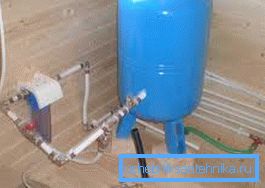
Note! Before proceeding to the main stages, a water supply system should be developed in a private house from the well, which will indicate the position of the pipes laid along the site and located in the house.
Having a detailed plan will allow the calculation of the required amount of material, resulting in reduced cash costs. Careful consideration of each stage will help to avoid some mistakes that could further affect the quality of the system and its service life.
Technology laying water from the well
To perform these works, it is not necessary to contact the specialists, because the installation of the system can be done by hand.
We will understand how to lay a water supply system from the well to the house.
- First of all, it is necessary to equip a trench in which pipes will be laid. It should be dug to a depth of at least one and a half meters. In areas with frosty winters, the burial depth should be increased. If the water supply system will be used only in summer, the depth can be reduced to one meter.
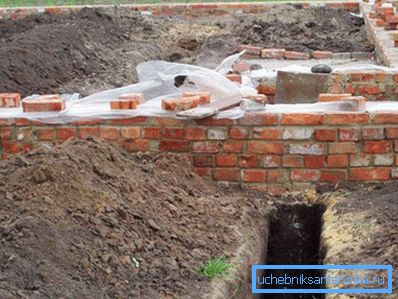
- Next, punch in the well with a sledgehammer hole. Then hold the pump, which is fixed to the check valve, which prevents the reverse flow of water. Then attach the pipe.

Tip! The pump should be located not less than 0.8 meters from the bottom of the well. The distance from the drain valve to the ground must be at least three meters. In order to ensure complete runoff of water through the valve, the underground part of the pipeline is made inclined towards the source.
- Next, proceed to the connection of electricity to the pump. This can be done by running a wire through the air, or by laying it underground. If there is a need to extend the cable, it is not safe to use tape for such purposes, therefore it is recommended to use terminals.

- The next step is to lay the water pipe. Ideal for such purposes to use PVC products. When they are installed in the ground, it is recommended to lay up the heat-insulating layer, which can be used as a foam or other material with good thermal insulation properties.
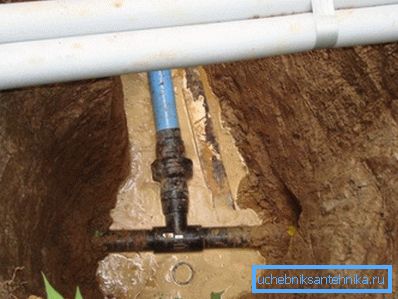
- During the construction phases it is easier to hold the pipes under the foundation. If the laying of water supply is carried out after the construction of the house, then use the surface method of laying.
Then we run water from the well to the house, making a hole in the wall. Since this place is most prone to low temperatures, it is necessary to pay special attention to thermal insulation.
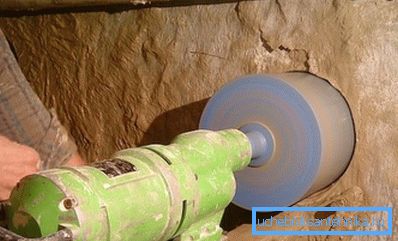
- In the section of pipe located in the cold zone, install the heating cable. This will maintain the optimum water temperature and prevent it from freezing.
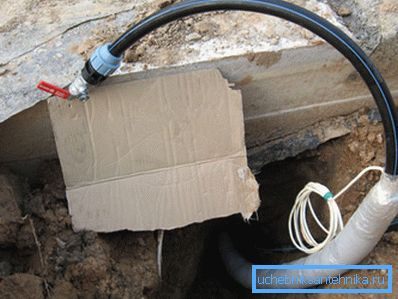
- The inclusion of a pressure switch in the system will maintain a constant pressure, which should be 2.4-4 atm.
For your information: The dry-running relay plays the role of a fuse. It works when the water in the well becomes less. When there is a drop in the level of liquid in the well, the relay shuts off the pump to prevent an emergency.
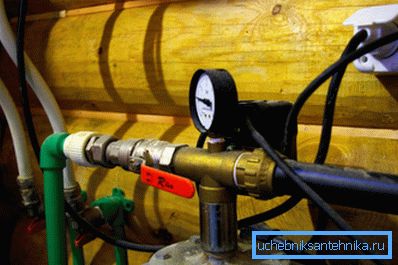
- After the hydroaccumulator it is necessary to place a tee that will distribute the water to the drinking water, and to the one intended for technical needs. Drinking water will be cleaned with an installed filter system.
Connecting another tee will allow to divide the water into hot and cold, while the pipe from the hot must be brought to the heater.

Distribution of water pipes in the house
Having dealt with how to conduct water supply to the house from the well, proceed to the laying of pipes in the premises.
Distribution can be carried out in two ways.
- Consistently. This scheme is suitable for a small house in which no more than two people live. Water is distributed throughout the house at once through a single pipe. Near consumers set tee with tap. The simultaneous use of several consumers connected to one tee, due to insufficient pressure will be difficult.
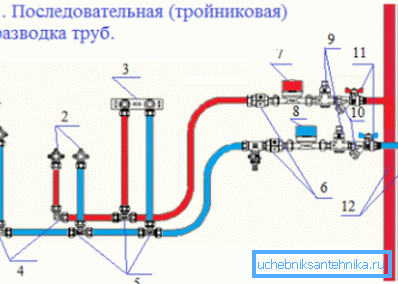
- Collector's. From the collector to each consumer has its own pipe. The pressure at all points will be the same. Of course, due to the remoteness of the pump, pressure losses will occur, but they will be insignificant. Due to the large number of pipes, such a system will cost several times more.
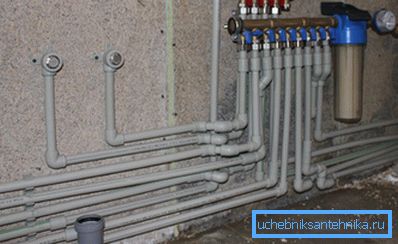
The choice of material for pipes
The market of building materials offers a large selection of pipes for plumbing.
Consider the most common types.
- Metal pipes differ in resistance to corrosion, good flexibility, resistance to ultraviolet. The advantages also include: the possibility of using fittings several times and the possibility of fixing with clips. Disadvantages of the product include sensitivity to low temperatures, deformation due to water hammer, and expensive fittings.

- Polypropylene pipes characterized by resistance to oxidation, corrosion, ease of installation. In addition, they are cheap and durable. However, when assembling it is necessary to use a welding machine.

- Copper pipes are the best option, however, the most expensive. They are not subject to corrosion, temperature extremes, harmful substances and can last more than forty years.
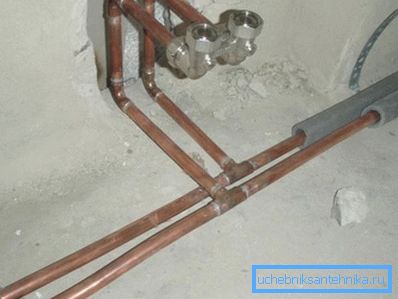
- Steel tubes differ in high rates of durability and rigidity, and also the long term of operation. The disadvantages include the occurrence of corrosion and the need for cutting and welding during installation.
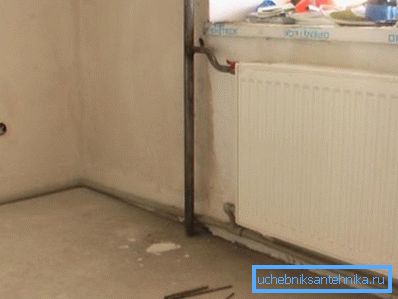
Conclusion
Connecting a country house to the central water supply is quite a costly measure. However, this is not a reason to abandon the benefits of civilization, because you can do it yourself with the plumbing from the water source at the site - the well, the well.
You probably will find this instruction manual and the video in this article.